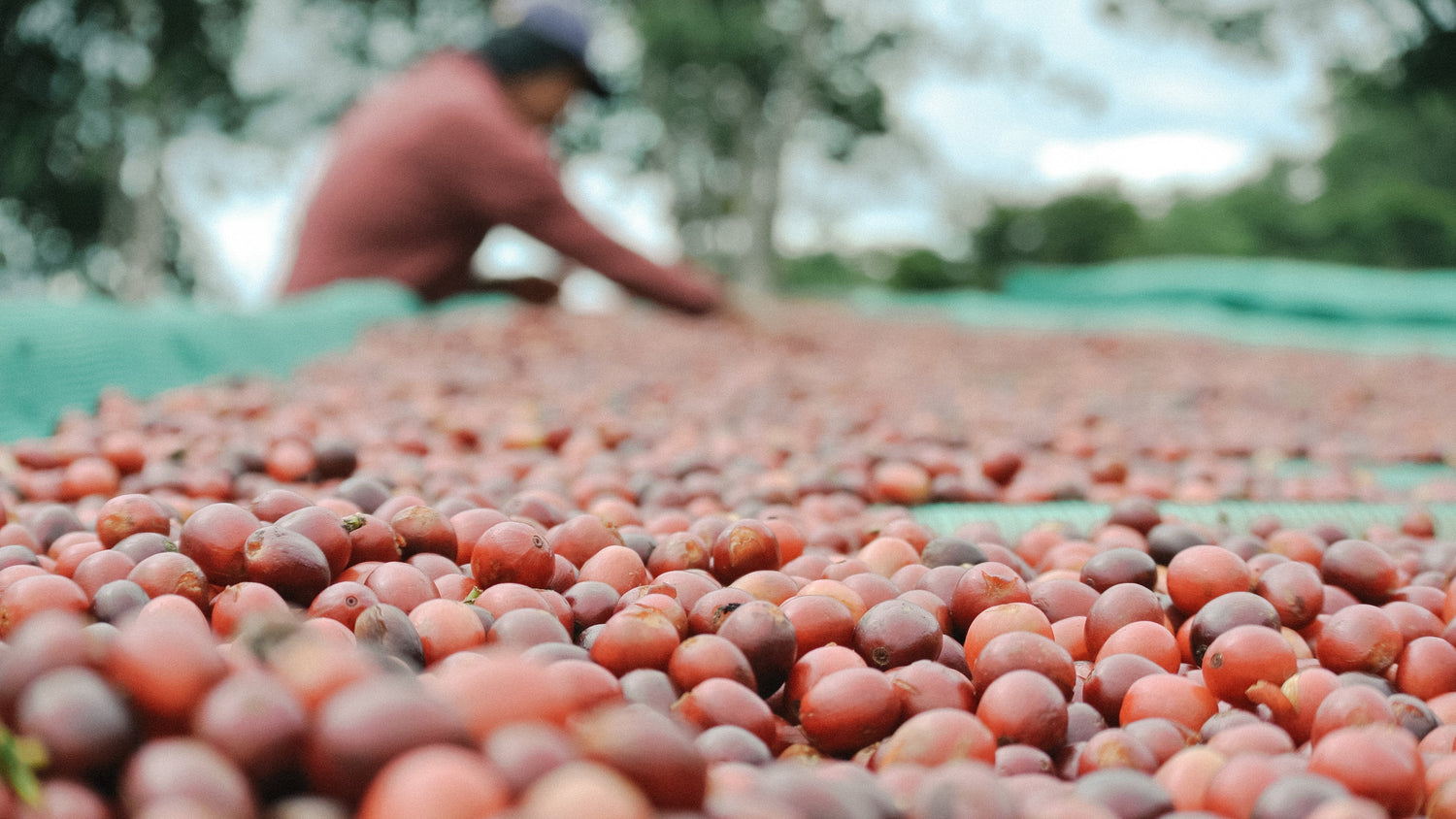
How is the coffee bean extracted from the cherry?
Most coffee drinkers are only familiar with the roasted bean—but the journey to coffee begins with a red fruit: the coffee cherry. Extracting the aromatic bean from this fruit requires...
Coffee processing is a term that you will definitely come across if you take a closer look at the topic, i.e. cultivation, processing and the unique taste. There are many different methods of coffee processing that can specifically influence the cup profile, i.e. the unique taste paired with the fine notes of the coffee. Especially in the course of the third coffee wave, numerous experiments were carried out, some of which created an extraordinary coffee taste. You will find out how this works in detail in the following lines.
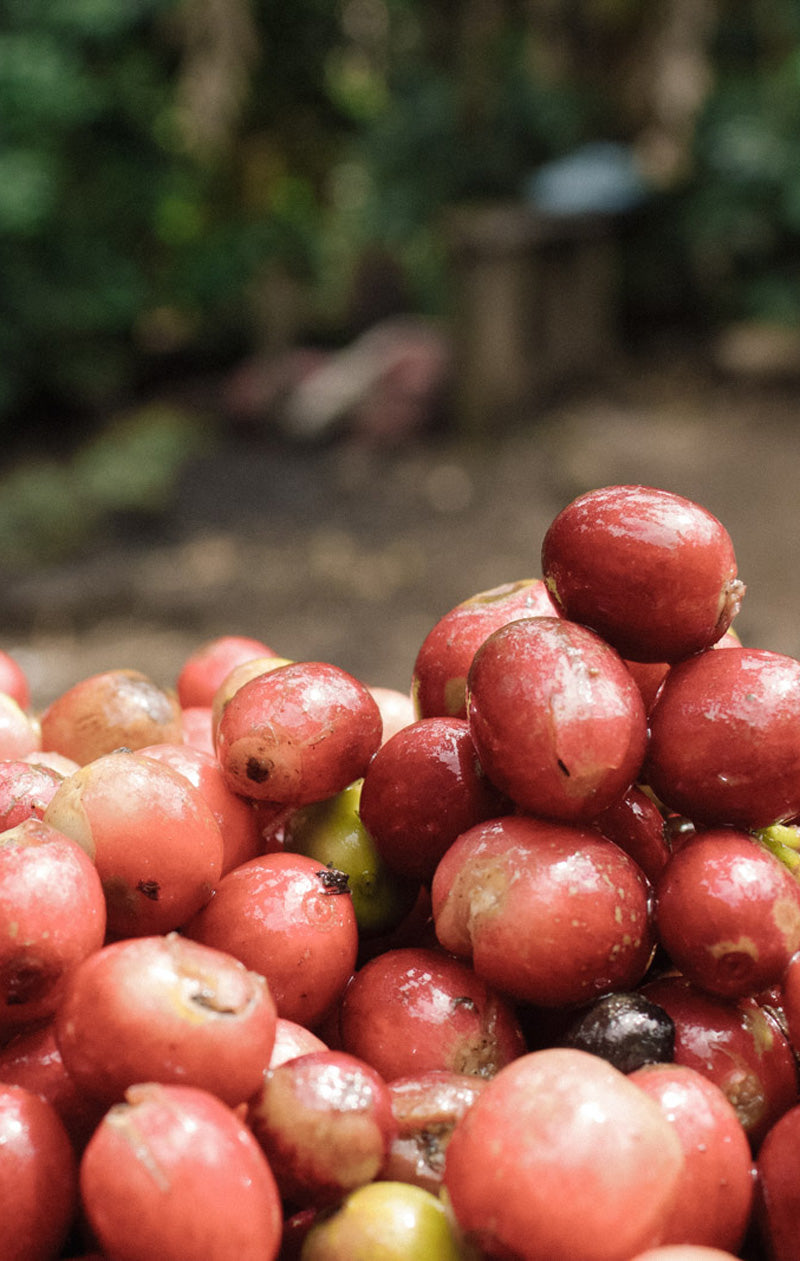
In general, coffee processing is actually quite simple to explain: it is the process in which the pulp and the parchment are separated from the core of the coffee cherry. The core of the coffee cherry is then the coffee bean, which we also know as green coffee. The processing of green coffee is particularly varied. There are numerous ways of separating the pulp from the green coffee.
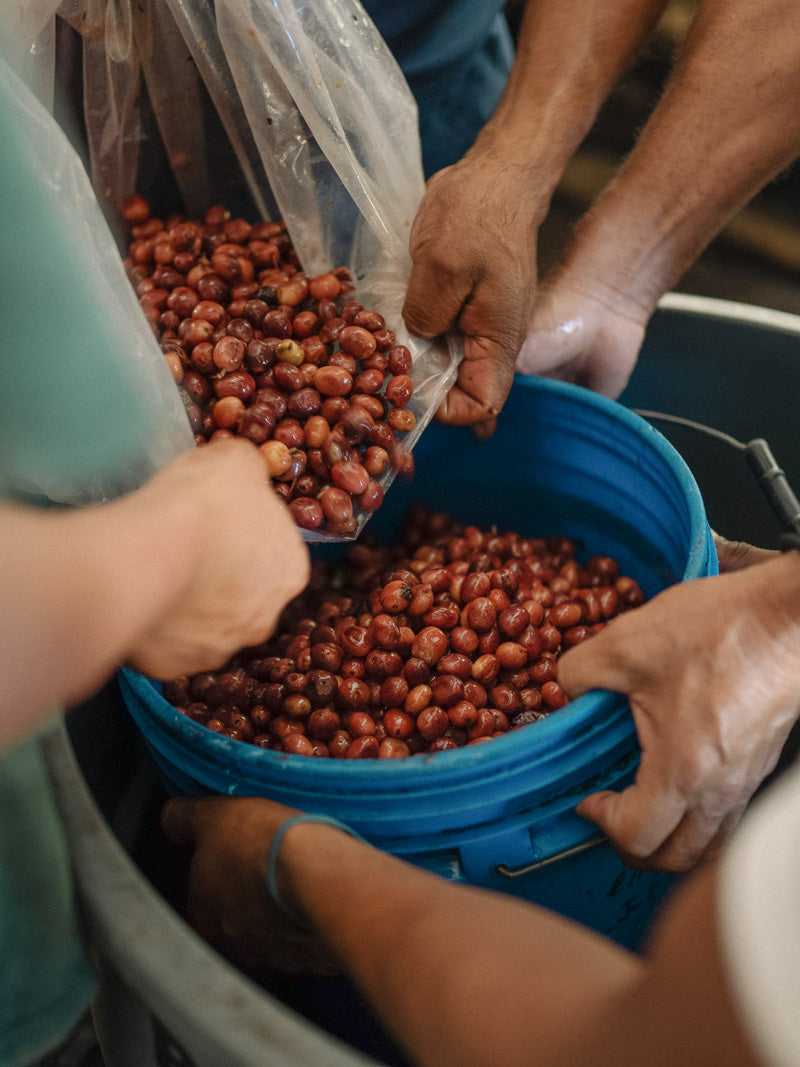
In fact, the processing of green coffee plays one of the most essential roles when it comes to the taste in the cup profile. In recent years, in the wake of the third coffee wave, there has been experimentation with green coffee processing. An increasingly common trend is processing methods that work with fermentation or specially produced microorganisms. Single-origin specialty coffees in particular, which already have rather unusual flavor notes, are processed using these special processing methods. This specifically highlights fruity and floral accents. But "simpler" methods, such as washed or natural processing, which have been used for years, also achieve great flavors in the cup profile.
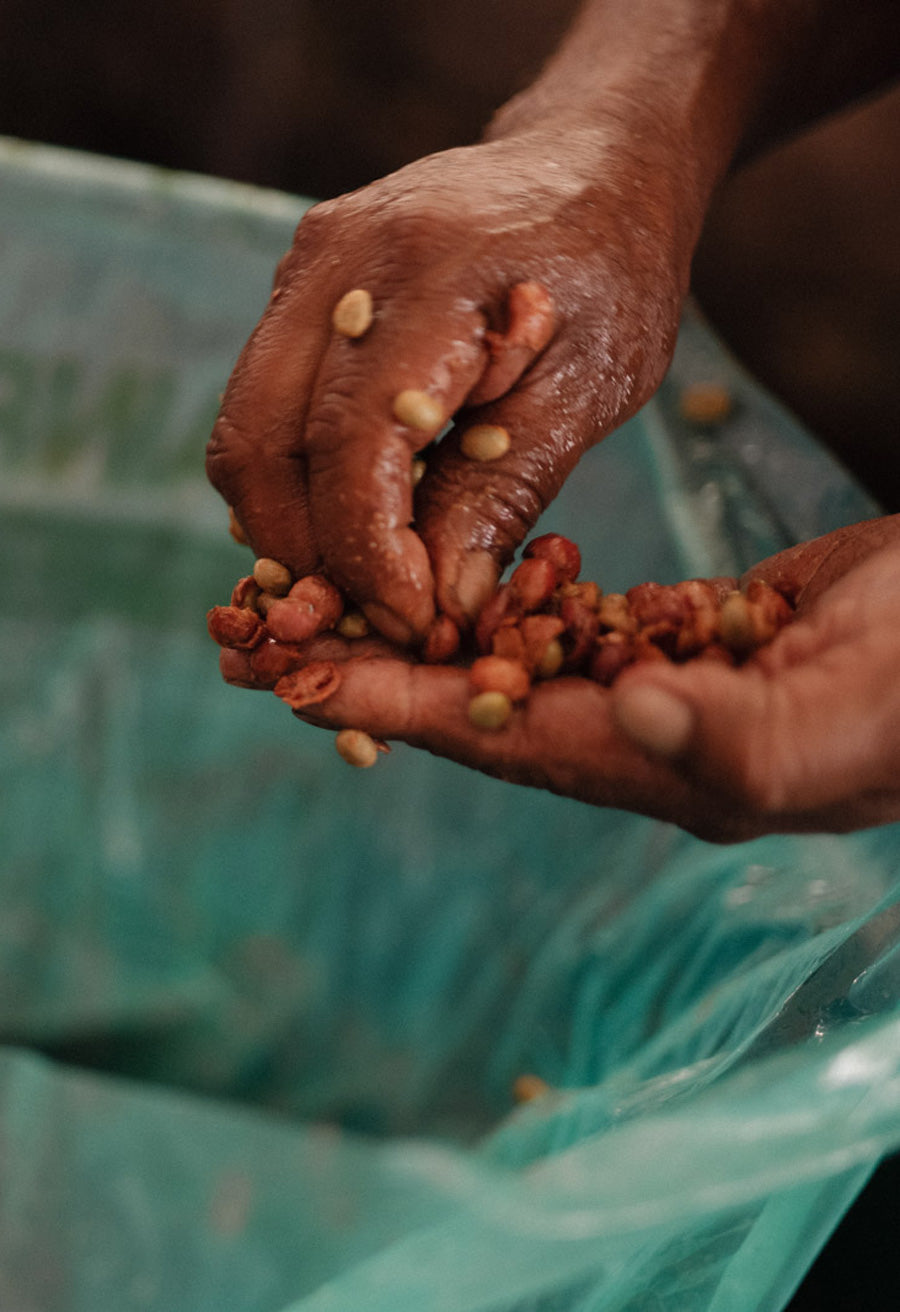
But what advantages do microorganisms and fermentation offer when processing green coffee? Targeted fermentation is mostly used for specialty coffees. These are single-origin coffees that are grown and produced according to the highest quality standards and principles. The advantage of fermentation is clearly in the cup profile. The fruity accents can be highlighted in this way. And all of this is completely natural and without any additives. In processing methods that work with fermentation, the pulp, the fruit mucilage and the parchment skin are washed off the coffee. The cherry stone, i.e. the actual green coffee bean, is then fermented in its own pulp in large containers or tanks. The bean thus develops an even more special, fruity taste.
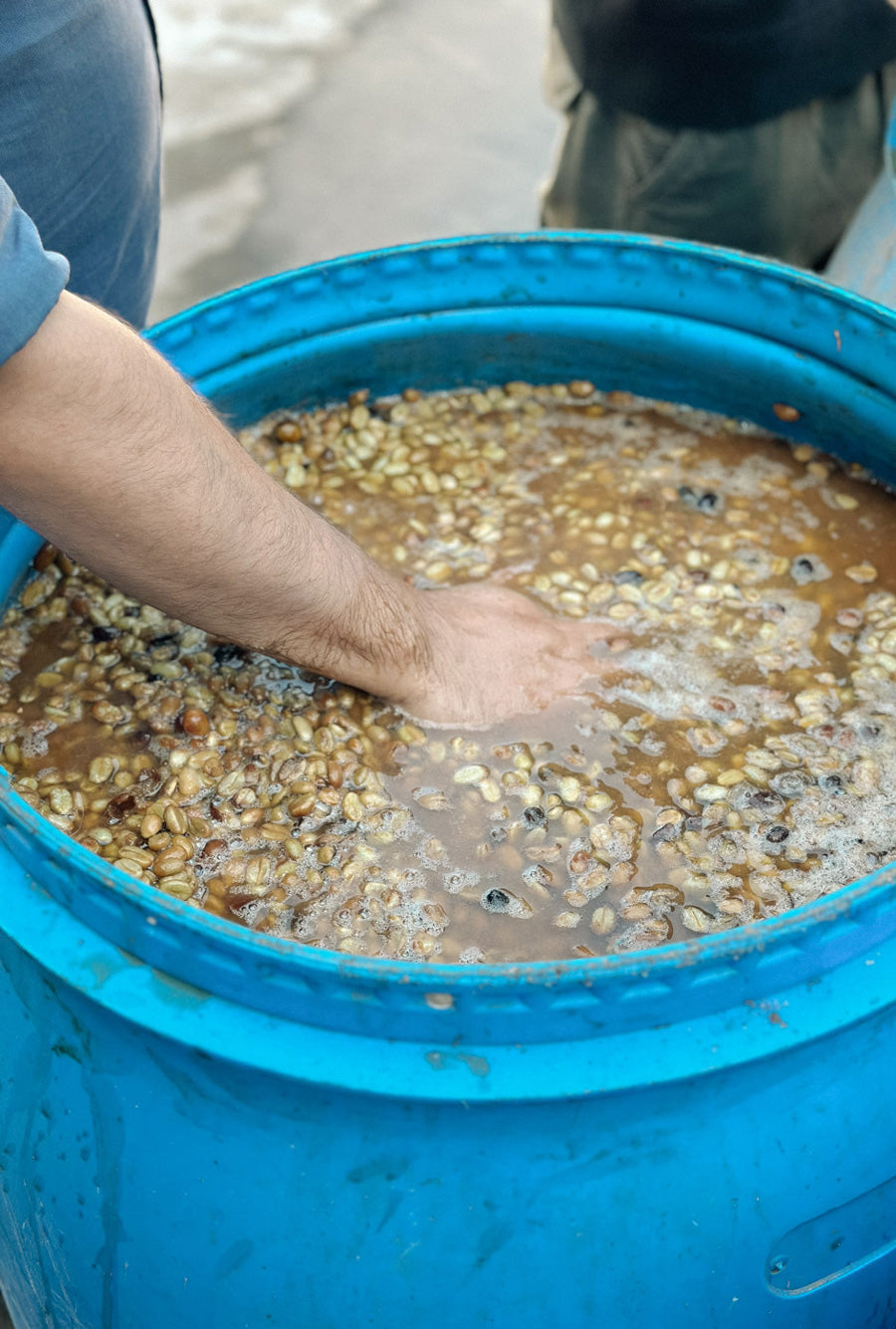
The fermentation of coffee is a completely natural process that begins when a coffee cherry is picked. It occurs as soon as water, sugar and starch break down into acids and alcohols. Fermentation typically takes place in two ways: aerobic and anaerobic. In aerobic processing, the coffee is fermented together with oxygene in a so-called open-air tank. In anaerobic processing, the exact opposite happens: the tanks are sealed so that they are oxygen-tight. Only a valve ensures that the CO2 produced by the fermentation can escape from the containers. Both processing methods have the advantage that very complex flavor profiles can be achieved. However, the discipline of fermenting coffee is an absolute master class and requires a great deal of experience in growing and processing coffee.

During fermentation, microorganisms are responsible for converting sugar and starch into acids and alcohol. Each individual microorganism influences the fermentation and thus the taste of the coffee in a variety of ways. This creates completely new flavors for different country coffees, which tend to be sweet and fruity. By using these options and processes, coffee producers can offer a new menu of coffee flavors and thus reach a potentially new range of buyers. Coffee drinkers who prefer a sweet, floral cup profile also get their money's worth. Furthermore, thanks to the many new processing methods that work with fermentation, the coffee is no longer completely dependent on the climatic conditions that prevail around the coffee farm. The typical taste of the bean from the respective country of origin is paired with fine, fruity nuances that the fermentation gives the coffee bean. This creates a completely new variety of flavors in the cup profile.

In fact, there are now numerous different processing methods that use fermentation as a basis for new worlds of taste and aroma. As a rule, however, it is only the wet processing methods that work specifically with fermentation and microorganisms. These processing methods work with targeted fermentation: washed, aerobic, anaerobic, kombucha, infusion, microorganism, carbonic maceration, etc. The biggest difference between the different variants is whether or not oxygen is allowed into the fermentation tanks. The anaerobic variants in particular allow the coffee to develop somewhat crazier notes.
In general, the processing methods can be divided into three different categories: wet processing, dry processing and semi-dry processing. The wet processing methods are also generally referred to as washed. The dry processing of green coffee is also generally known as natural. Both are considered the "classics" among the processing methods. This also means that they are the basis of every new processing method.
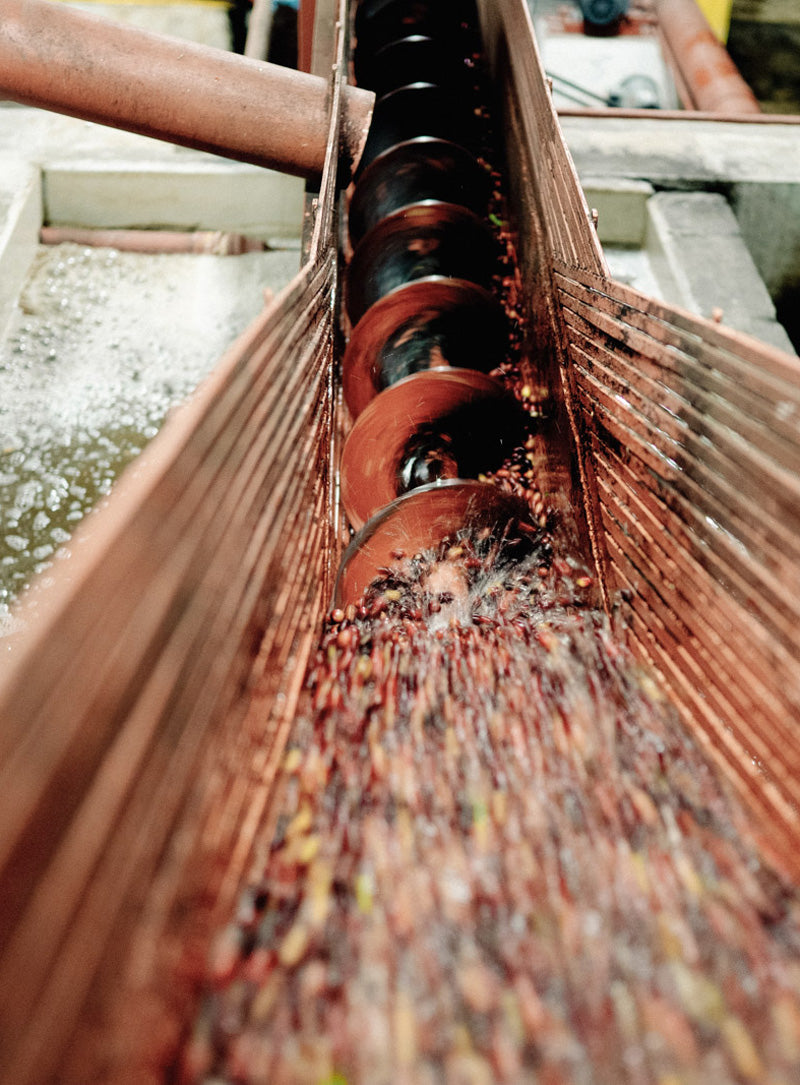
For wet processing, the fruits are first cleaned in water tanks, pre-sorted and then sent through the pulper (a machine that squeezes the pulp from the beans). The remaining mucous membrane and parchment are then dissolved in a fermentation tank using a fermentation process and made washable. The process takes between 12 and 36 hours before the green coffee is dried on large drying areas for 10 to 15 days. The taste and the fine notes of the coffee are thus reproduced in a targeted and, above all, clear manner. Washed coffee is usually produced in the Latin American highlands, but coffees are also often washed and processed in parts of Africa such as the Guji zone in Ethiopia or Rwanda.
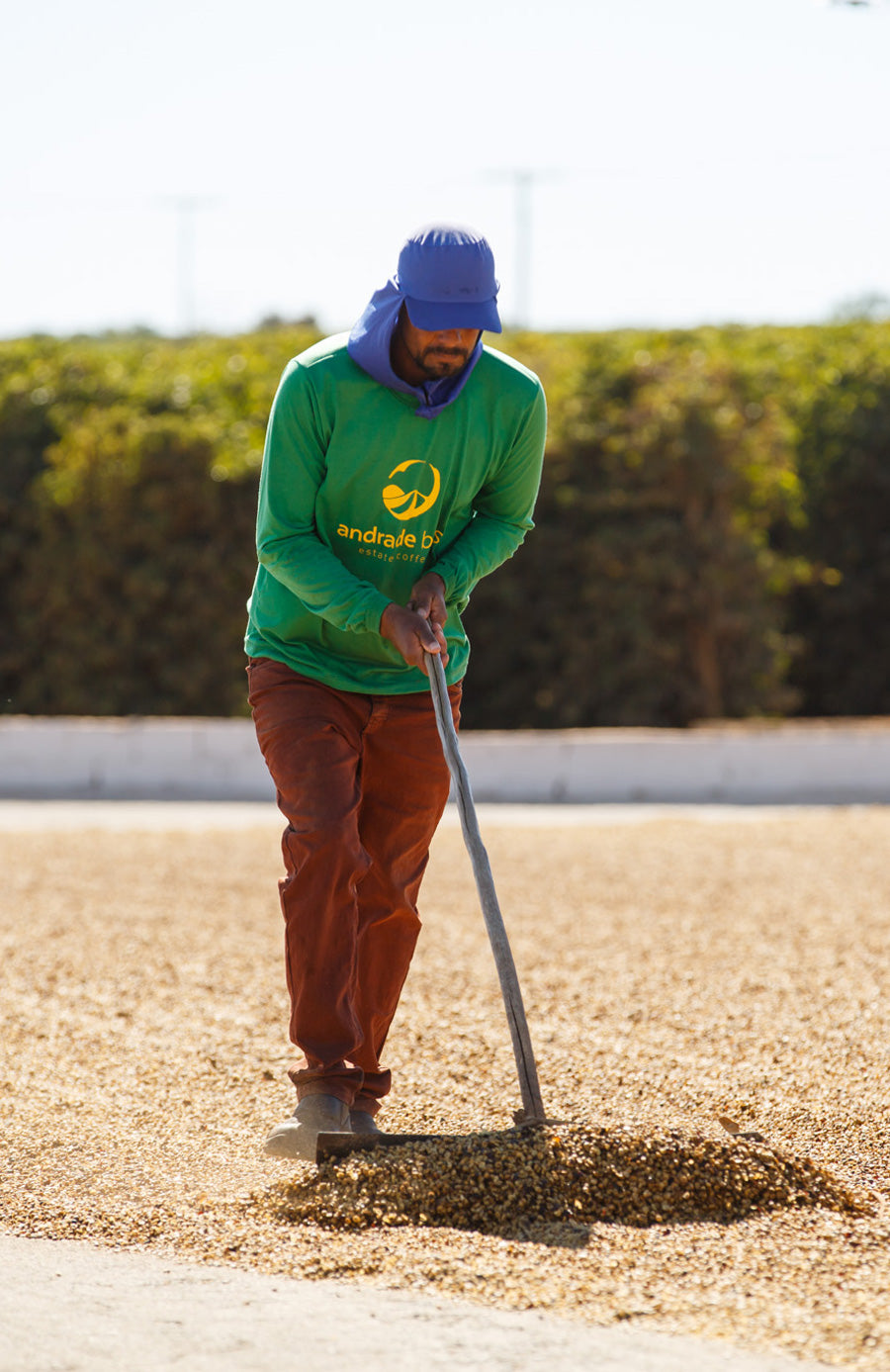
The cherries are spread out on concrete or paved ground and dried until the beans inside can be peeled out dry and without residue. This type of processing takes about three to five weeks. Dry processing is the oldest method of processing and requires almost no mechanical use. Typically, coffees from Brazil, Ethiopia or India (Robusta) are processed naturally. The method is ideal for warm, dry growing areas.
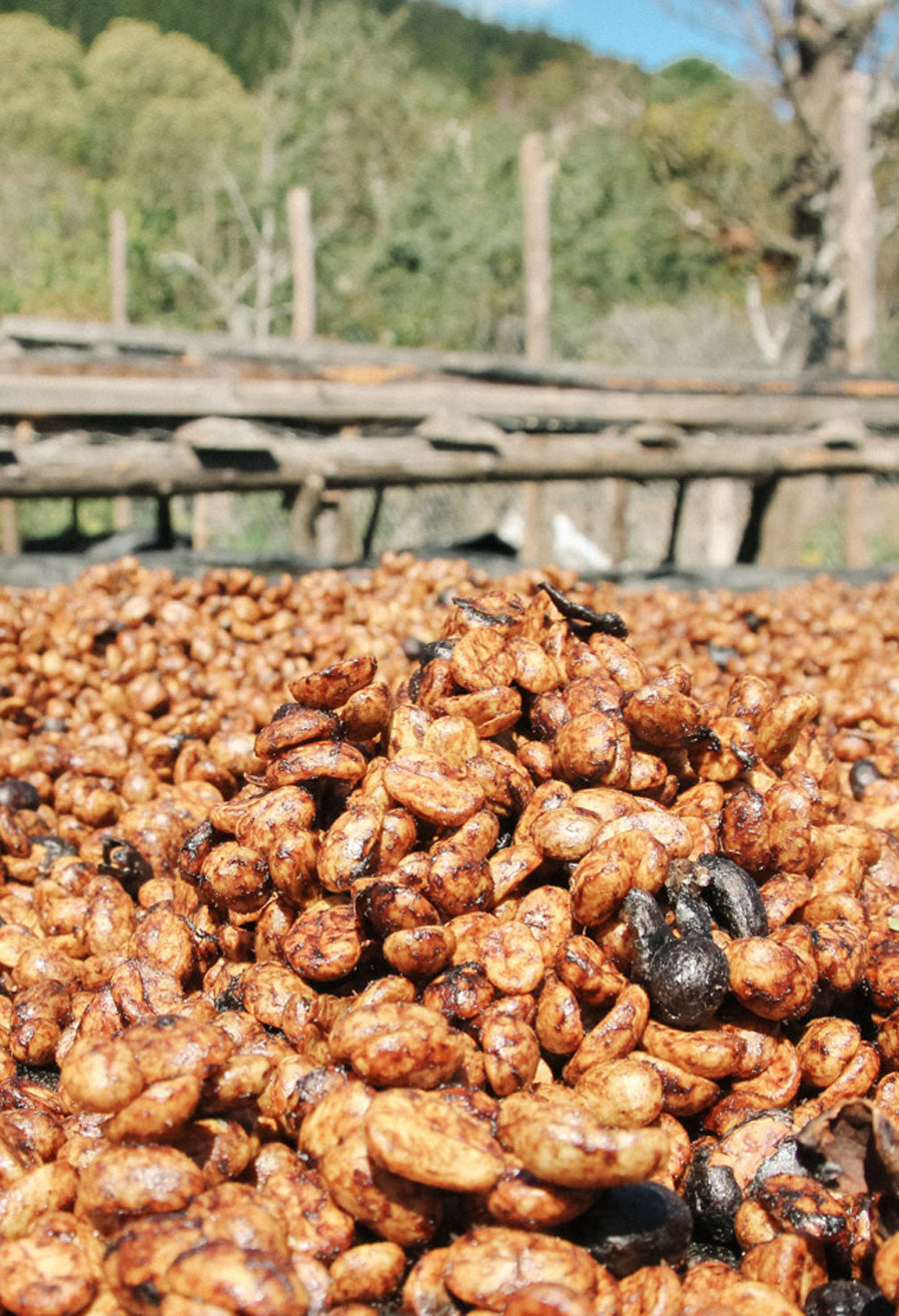
This processing is a mixture of the dry and wet variants. The pulp is separated from the cherry as much as possible by machine and then dried in the sun. The beans must be turned regularly. There is a sticky layer (mucilage) around the beans, which can cause the beans to rot if not treated enough. In addition, regular checks are made to ensure that no fermentation process occurs. Semi-dry processed coffee is known for its strong, spicy aromas with a full body. Thanks to the drying process, these properties are also paired with a slight sweetness.

Most coffee drinkers are only familiar with the roasted bean—but the journey to coffee begins with a red fruit: the coffee cherry. Extracting the aromatic bean from this fruit requires...
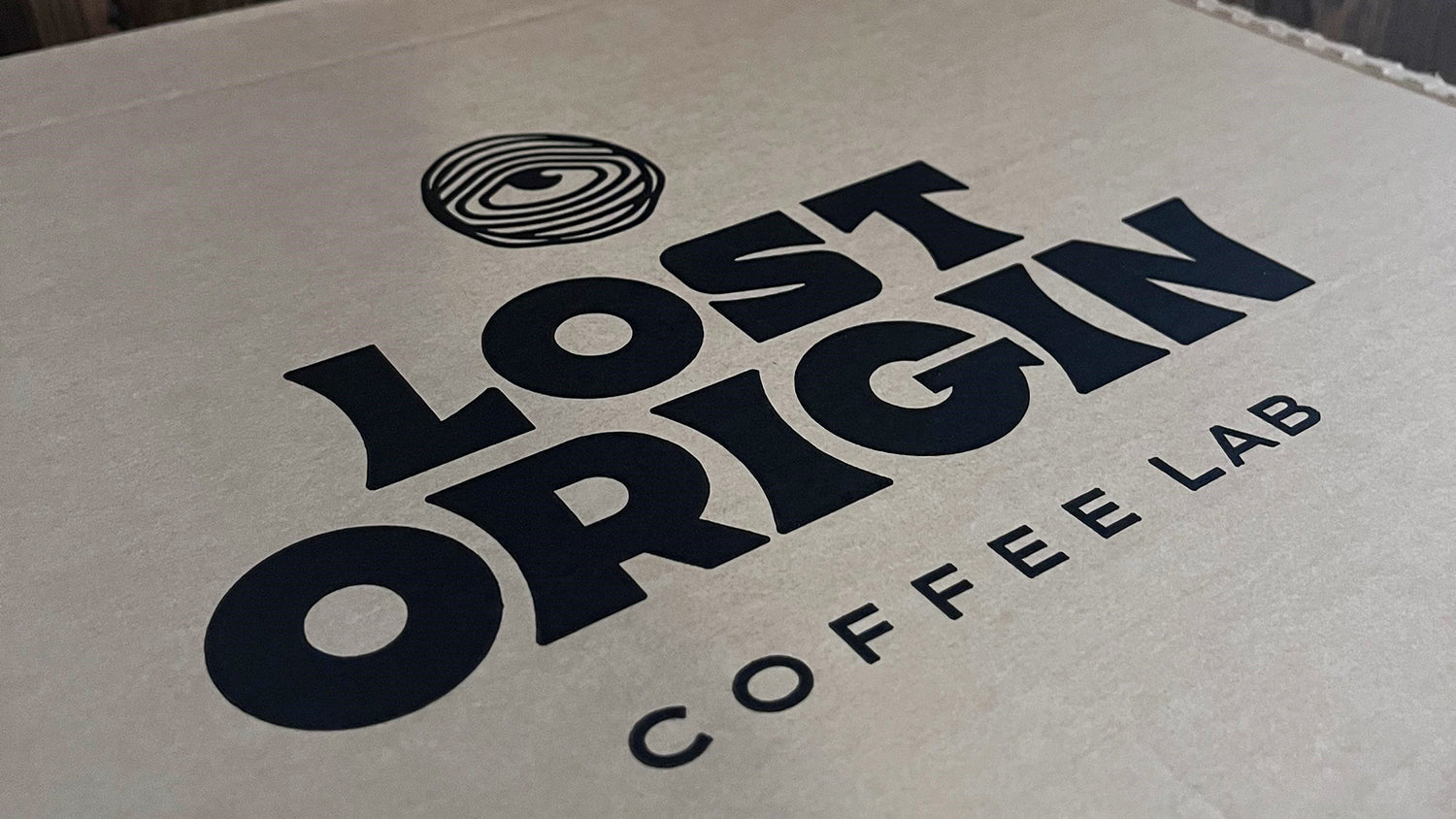
Not only very popular with competition participants: coffees from Lost Origin Coffee Lab from Panama. Our man in Vienna, World Brewers Cup Champion 2024, Martin Wölfl, used a Geisha from...

Logically, green coffee is naturally made into roasted coffee . But green coffee can also be used for other purposes. Green coffee is also often used in the health sector as a...



